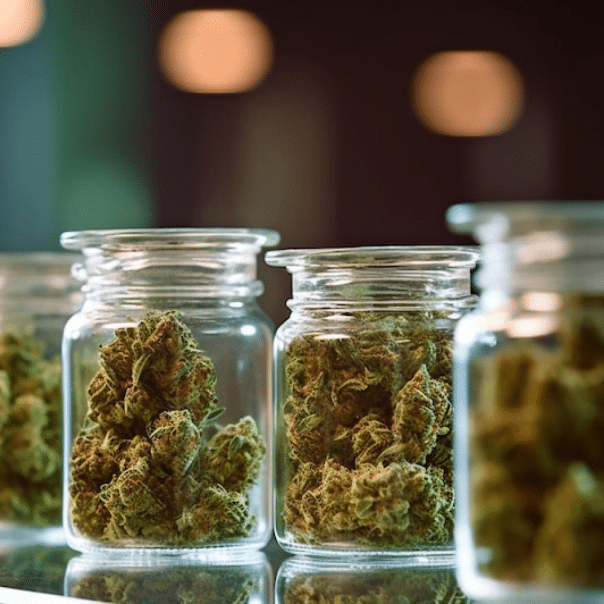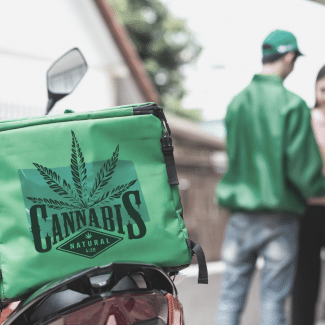Seed to sale has become the cannabis equivalent of farm to table — a statement about a company’s control over its product reduced to a marketing buzzword. But truly being a “seed to sale” company comes with intricacies and risks along every stage of the cannabis supply chain and a need to manage those risks. Here’s what you need to know about insurance coverage for seed-to-sale companies.
“Seed to Sale” Explained
Being a seed-to-sale company means one organization controls the plant at every stage of the cannabis supply chain. The same company that plants the seeds is the one that harvests, cures, processes, packages, tests, and sends it off to be sold.
Stages of the cannabis supply chain:
- Seed sale and cloning
- Cultivation
- Harvesting
- Processing
- Testing
- Distribution
- Retail
A seed-to-sale company will do most of these in-house, with the possible exceptions of buying seed or clones to introduce new genetics, testing, and retail. Some seed-to-sale companies have their own stores to sell products, while others create a brand that lives on dispensary shelves.
Being a seed-to-sale company doesn’t exempt a business from the required lab testing. Lab tests must be conducted and made publicly available for consumers to trust the product’s potency and a brand’s claims.
Insurance Coverage Along the Cannabis Supply Chain
A company incurs risk at every stage of the supply chain; a company involved with multiple steps will incur the risks of each, compounding that risk. The proper insurance policies to cover exposures and mitigate risks are essential for seed-to-sale companies.
Cultivation
Cultivators are the backbone of the cannabis industry. After all, if there’s no flower to process and sell, there’s nothing for consumers to buy. Cultivation tasks involve selecting the seeds and genetics and planting them or planting the clones of a strain. Cultivators must carefully nurture plants with the proper lighting, water, nutrients, and airflow to ensure maximum yield and trichome production while keeping pests, diseases, and mold at bay.
The risks of cultivation center mainly around the plant and the value of the plant. If everything goes well, a large harvest is delivered and sent off to the next stage of the cannabis supply chain. But if aphids attack a crop, mold strikes a grow room, or an environmental disaster like wildfire disrupts your ability to grow, the harvest and, thus, profits are impacted. Policies like crop coverage and property insurance can help protect a company’s bottom line.
Harvesting
Here, the flowers are harvested and taken for processing. This includes trimming excess leaves and stems, drying, and curing the cannabis. Each company has its own process for doing this (dry trim versus wet trim, air dry versus machine), but the harvest must be done with care for the plant to preserve its potency, flavor, trichomes, and terpenes.
Poorly dried or cured cannabis will result in a rancid end product that consumers won’t be happy with, leaving you with a backlog of products or worse — complaints and refund requests.
Processing/Extraction
In the processing and extract phase, cannabis flower is either divided into packages, sold as is, or sent off to be turned into one of the thousands of products on the shelf. Many companies divide the buds by size — sell the large ones, and process the smaller ones into other products with a higher profit margin.
Extraction is a science that requires careful attention to detail, expensive machinery, and exposure to potentially harmful chemicals. After all, THC and CBD don’t simply walk off the plant into your favorite edibles or lotion — the compounds must be extracted from the plant matter, isolated, and turned into concentrates, topicals, edibles, and more.
But the risks of extraction necessitate comprehensive coverage. Policies such as property insurance to cover the cost of the machines and product liability to back the end products are essential. Additionally, processing can expose workers to potentially high levels of ground cannabis, which can become toxic over long periods. Worker’s compensation, as well as PPE best practices, are essential at this stage.
Manufacturing
After it’s extracted, the isolated trichomes like THC and CBD must be sent to a manufacturer to add to the cannabis products you know and love. This may include a bakery for edibles, a canning line for drinks, or a manufacturing line for capsules.
Like extraction, the manufacturing stage of the cannabis supply chain requires expensive equipment, a controlled environment, and careful attention to detail. Property insurance that covers this equipment can be the difference between a record profit month and spending everything on a new machine.
Testing
Testing is a crucial stage of the cannabis supply chain to ensure consumer safety. Proper product testing allows a customer to know what’s in the cannabis, how strong it is, and rest assured that there are no dangerous contaminants.
Testing requirements are different in each state but typically include the THC percentage and testing for contaminants and heavy metals. Accuracy and authenticity in this stage are crucial for consumer safety and trust, as well as your company’s reputation.
But even the most rigorous tests can miss something. In Oregon, a large recall was sent out after cannabis flower from multiple brands tested positive for mold and heavy metals. Product liability insurance can make sure that a glitch in the testing process doesn’t negatively impact your company’s financials.
Packaging and Labeling
In this phase, products are put into their final packages for sale.
This stage looks different in every state because every state has different requirements about what packages can and cannot display. Packages often cannot have large graphic displays or be “enticing to children.” All packages must include product information, but what this means varies by state. Some states only require the THC percentage and total cannabinoid percentage, while other states require minor cannabinoids or terpenes.
Packages must also include ingredients in manufactured products, safety warnings, and usually some safety opening mechanism. Packaging is an issue of compliance, and being found out of compliance can mean facing a fine or a total product recall. In July, a Michigan-based edibles company was forced to recall a product after the packaging was found to be out of compliance.
Distribution
The distribution stage is less about cannabis than transportation, although this stage faces risks from both sides. For a seed-to-sale company, covering distribution cuts out a middleman but means incurring the risk of vehicular accidents, damaged inventory in transit, or even drivers being robbed. Auto liability and property-in-transit insurance are a must.
Retail
Some seed-to-sale companies don’t have a retail outlet, while others sell directly to the consumer. This additional storefront brings opportunity and risk, primarily centering around employee safety and theft. The street value of cannabis products is still high, and you need both rigorous best practices and comprehensive coverage as a safety net against theft.
Protecting your cannabis company can seem confusing; however, we’re a full-service insurance brokerage working with carriers worldwide to offer you the best coverage possible. We’re here to help! Please reach out to us today by emailing [email protected] or calling 646-854-1093 for a customized letter of commitment or learning more about your cannabis insurance options.


